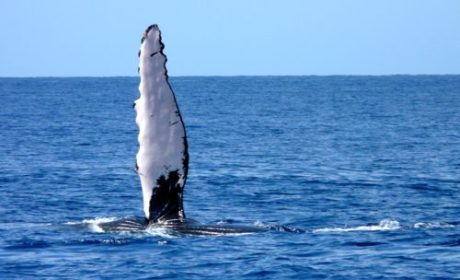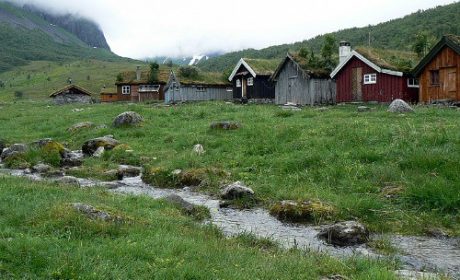Would you like to go walrus watching in the Arctic? It’s not an easy task. First, you need to travel on an Arctic expedition cruise to the Atlantic or Pacific. And then keep your fingers crossed that the expedition staff will make a sighting of a walrus on the ice or spot a herd hauled out onto a beach.

You never know how much wildlife you’ll meet on an expedition cruise. While the goal is to see as much as possible, the wildlife must cooperate by being visible. The ship’s captain and expedition staff are always on the lookout for the next opportunity. And that’s how Alan and I happened to go walrus watching at Ardneset in Norway’s Svalbard region.
Finding walrus in the Arctic Ocean near Svalbard

A fine, sunny day for Svalbard is more of an exception than the norm. And, on this day we luck out with clear skies and moderate temperatures—for the Arctic—and a sighting of the endangered walrus. Because it’s sunny, Alan and I skip the middle layers of our expedition outfits, opting for base layers, waterproof pants and the puffy jacket with raincoat provided by Silversea.

As our zodiac approaches, the hulking bodies of a bellowing walrus herd stretch out before us, looking like a mound of brown on the shoreline. I wonder how they rest comfortably with those long tusks getting in the way. Seems like a neck ache in the making, considering that the tusks weigh up to 12 lbs.
And they are so long. Male tusks grow to 3 feet with females having slightly shorter tusks at 2-1/2 feet. In the water, walrus use the tusks to cut through ice. But those long white tusks come in handy when hauling a heavy walrus body out of the water onto land. And, of course, they are built-in weapons for self-defense; or, in the case of males, fighting over a particularly appealing female.

Shouting above the noisy walrus, expedition guide, John Buchanan, points out two fuzzy, white blobs at the base of a rocky slope. Yes, it’s a polar bear mother and her cub. They are some distance away and not easy to photograph. But it’s the only opportunity we have, so Alan and I do our best.

Walrus sentinels patrol the water offshore, protecting the herd. Two of them begin to follow our zodiac. They pop their heads up for a curious look at us. And we look back, admiring their whisker-covered faces. Walrus use their whiskers, called mustacial vibrissae, to communicate and also to forage for clams and mussels located on the bottom of the ocean.

Another walrus head pops up beside us, then disappears as he or she swims underneath the zodiac. Since walrus can remain under water for 30 minutes at a time, we’re not sure if we’ll see this walrus again. But we do.
A walrus gets up close and personal on an Arctic Cruise

Coming around behind the zodiac, the walrus approaches a little too close for comfort, especially since John has turned off the motor and allowed us to stand up for photography opportunities or simply to view the walrus better.
“Sit down,” John calls out. Everyone in the raft quickly obeys.
“Is this aggressive behavior for the walrus,” one of the group asks?
“No, he’s just extremely curious about us,” John replies.
But we can’t take any chances. Walrus have been known to puncture zodiacs with their tusks. Due to the zodiac’s double-hull, we’d make it back to the Silver Explorer just fine. However it would be the end of our walrus watching for the day. And we’re all having too good of a time for this adventure to end.
More adventures on an Arctic Cruise
A cruise in the Arctic is filled with adventure opportunities for boomer travelers. Here are a few of our favorites from this Silversea Arctic Cruise.




